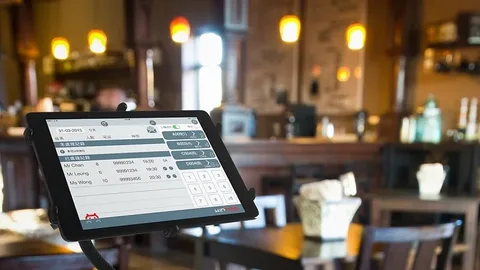The number of concerns that have to be addressed by restaurant operators on any given day can make one dizzy and it ranges through the process of scheduling employees to balancing inventory and orders as well as the relationship with clients. Modern technology can be used to simplify these procedures in terms of facilitating integration of management platforms and full solutions. Nevertheless, when it comes to picking the most excellent all in one restaurant tool, you have to weigh several variables closely. Your decision will significantly determine the productivity, profitability and overall success of your business. This article offers five crucial tactics to assist you in making decisions and selecting a solution that genuinely meets the particular requirements of your business.
1. Understanding Your Restaurant’s Specific Operational Requirements
Perform a comprehensive evaluation of your restaurant’s present operations and pinpoint particular pain issues before looking at your options. Record all the activities of each day such as taking orders, kitchen management, payment collection and other customer services. Considerations such as the number of staff, rush time, the average number of orders to be filled and the sitting capacity should be considered. Examine which tasks are producing bottlenecks in your operations by requiring the most time and resources. This thorough knowledge will be the basis for your assessment of possible solutions and guarantee that you choose a tool that solves your most urgent problems without adding to them.
2. Evaluating Core Features and Functionality Depth
An all-in-one restaurant tool that works well should combine several crucial features without sacrificing functionality in any one of them. Identify those that offer good point-of-sale capabilities, financial reporting, employee scheduling, items management and customer relationship management. Analyze user interface to see how easy it is to use and the possibility of the system to be familiar to the employees within a short period of time. Research on customization that allows you to deploy the platform on top of your distinct price structures, menu structures, and customer service preferences. Instead of being a complicated system that needs a lot of training, the perfect solution should feel like a logical extension of your restaurant’s operations.
3. Assessing Integration Capabilities and Technical Compatibility
The newest restaurants use technologies, including kitchen display systems, online ordering and delivery services, etc. Your selected all in one tool should be able to fit in the current systems and trending third party applications without disruptions. Check that it is compatible with the hardware you have, tablets, printers, payment terminals, in order to avoid having to go out and buy new ones. Look at the levels of availability of application programming interfaces where data can be transferred across platforms with no problem. Make sure that the platform is scalable with your business without having to make full-scale system replacements.
4. Analyzing Cost Structure and Return on Investment Potential
Given the infamously narrow profit margins in restaurants, cost analysis is essential when choosing management solutions. Consider the entire cost of ownership, which includes setup costs, training costs, transaction fees, and continuing support charges, in addition to the original subscription payments. While some platforms offer fixed monthly prices, others charge by the terminal, user, or transaction. Determine the possible financial benefits from increased productivity, less food waste, better inventory control, and greater client retention. Think about the time you and your employees will save, as this will result in lower labour costs.
5. Prioritizing Customer Support and Training Resources
Even the simplest in use restaurant management system should be deployed properly and tested occasionally to solve small issues. Assess the efficacy of the level of customer support services such as speed of response, mode of communication and target level of knowledge. Find the suppliers that provide detailed training classes, user manual, educational videos, and ongoing training resources. Examine client endorsements and reviews to get a sense of actual interactions with the support staff. During peak hours, when system malfunctions could seriously affect your restaurant’s operations and earnings, providing dependable customer service becomes even more important.
Conclusion
The best all-in-one restaurant management application would be a strategic decision you make to boost the productivity and profitability of your business. As an informed choice, the long-term success of your restaurant can be guaranteed by taking into consideration the knowledge of all elements of your operations needs, testing matters of key features, provision of proper integration capabilities, in-depth cost analysis, and quality of support. The optimum solution will enable you to scale with your firm as it evolves and at the same time make your day-to-day work easier instead of organizing it more complicatedly. Spend some time doing extensive research, asking for demos, and maybe trying out a few possibilities before deciding. Investing in the appropriate management solution will yield benefits for years to come, including increased profitability, better client experiences, and increased efficiency.







